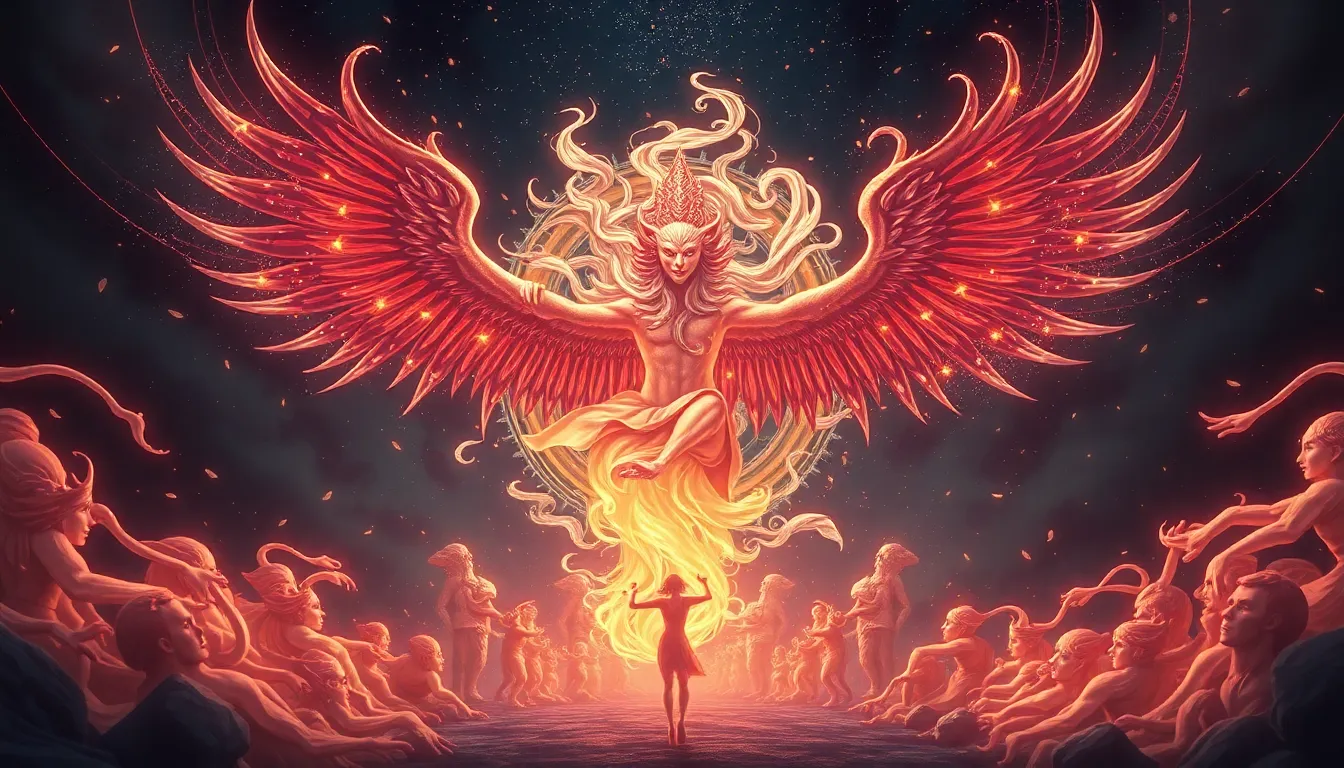The Sphinx and its Connection to the Underworld: Exploring the Journey of the Soul
I. Introduction
The Sphinx holds a prominent place in ancient Egyptian culture, serving as both a monumental statue and a powerful symbol of protection. This enigmatic creature, typically depicted with the body of a lion and the head of a human, embodies the duality of strength and wisdom. The significance of the Sphinx extends beyond its physical presence; it is deeply intertwined with Egyptian beliefs about the afterlife and the journey of the soul.
In Egyptian mythology, the underworld, known as the Duat, plays a crucial role in the life after death. It represents a realm where the soul undergoes trials and tribulations before achieving eternal peace. The purpose of this article is to explore the Sphinx’s role in this journey, highlighting its protective qualities and its mythological connections to the soul’s passage through the underworld.
II. The Sphinx: A Symbol of Protection and Power
The Sphinx is not merely a statue; it is a guardian figure embedded within the fabric of ancient Egyptian culture. Its imposing presence serves as a sentinel, watching over sacred sites and tombs. The most famous of these, the Great Sphinx of Giza, stands as a testament to the artistry and engineering prowess of the ancient Egyptians.
Historically, the Great Sphinx was constructed during the reign of Pharaoh Khafre, around 2500 BCE. Standing approximately 66 feet tall and 240 feet long, it is the largest monolithic statue in the world. Beyond its physical grandeur, the Sphinx symbolized the pharaoh’s divine authority and the protective power of the gods.
In temples and tombs, the Sphinx served a dual purpose: as a guardian of sacred spaces and as a representation of the pharaoh’s eternal watchfulness over his people. Its presence was meant to ensure safe passage for the deceased into the afterlife, emphasizing the importance of protection in the journey of the soul.
III. Egyptian Beliefs about the Soul and the Afterlife
Ancient Egyptians held a complex understanding of the soul, which was divided into several components: the Ba, Ka, and Akh. The Ba represented the personality and could travel between the living world and the afterlife. The Ka was the life force, necessary for existence in both realms, while the Akh symbolized the transformed spirit that had successfully navigated the trials of the Duat.
The afterlife was of paramount importance in Egyptian religion, as it was viewed as a continuation of life on Earth. To ensure a successful journey, Egyptians engaged in various rituals and practices, including:
- Embalming and mummification to preserve the body
- Burial with items needed for the afterlife, such as food, tools, and amulets
- Recitation of spells and prayers to guide the deceased through the Duat
IV. The Sphinx and the Underworld: Mythological Connections
In mythology, the Sphinx appears in various stories and interpretations, often depicted as a guardian of knowledge and a protector of sacred truths. One of the most notable roles of the Sphinx is as a guide for souls navigating the Duat, where it assists them in overcoming obstacles and challenges.
The symbolism of the Sphinx extends to themes of judgment and rebirth. In the afterlife, a soul would face the judgment of Osiris, where it was weighed against the feather of Ma’at. The Sphinx, with its formidable presence, was believed to play a role in this judgment, ensuring that only the worthy could pass into the realm of the blessed.
V. The Journey of the Soul: From Earth to the Afterlife
The journey of the soul after death is a multi-phased process, intricately detailed in Egyptian texts. Upon death, the soul would first enter the Duat, where it faced a series of trials. The Sphinx’s role in this journey was significant, as it provided guidance and protection against malevolent entities.
Key phases of the soul’s journey include:
- Departure from the physical body
- Encountering various deities and challenges in the Duat
- Final judgment before Osiris
Throughout this journey, the soul would encounter important deities, such as Anubis, the god of mummification, and Thoth, the god of wisdom and writing, who assisted in recording the judgment.
VI. Artistic and Literary Representations of the Sphinx and the Underworld
The Sphinx has been depicted extensively in ancient art and sculpture, showcasing its significance in Egyptian culture. Statues, reliefs, and paintings often illustrate the Sphinx in conjunction with other deities and scenes from the afterlife.
Literary references to the Sphinx are found in texts such as the Book of the Dead, where it is mentioned as a protector and guide for the deceased. These texts served as a manual for navigating the afterlife, emphasizing the importance of the Sphinx in the journey.
Modern interpretations of the Sphinx have also emerged in literature and film, often symbolizing mystery and the unknown. This enduring legacy highlights the Sphinx’s place in both ancient and contemporary culture.
VII. Archaeological Discoveries and Their Implications
Archaeological findings related to the Sphinx and its surroundings have provided valuable insights into its purpose and significance. Excavations around the Great Sphinx have unearthed artifacts, inscriptions, and structures that shed light on its role as a guardian of the afterlife.
Modern studies using advanced technology, such as ground-penetrating radar, have revealed new chambers and tunnels that suggest a more complex relationship between the Sphinx and the underworld than previously understood. Ongoing debates among archaeologists and historians continue to explore the Sphinx’s connections to the afterlife and its symbolic meanings.
VIII. Conclusion
In summary, the Sphinx serves as a powerful symbol of protection and guidance in the journey of the soul through the underworld. Its intricate connections to Egyptian mythology, beliefs about the afterlife, and artistic representations highlight its enduring significance in ancient culture.
Today, the Sphinx continues to captivate the imagination, reflecting humanity’s quest for understanding the mysteries of life, death, and the afterlife. As we delve deeper into the past, it becomes increasingly vital to appreciate the importance of the Sphinx in shaping our understanding of ancient Egyptian spirituality and its lasting impact on contemporary culture.



